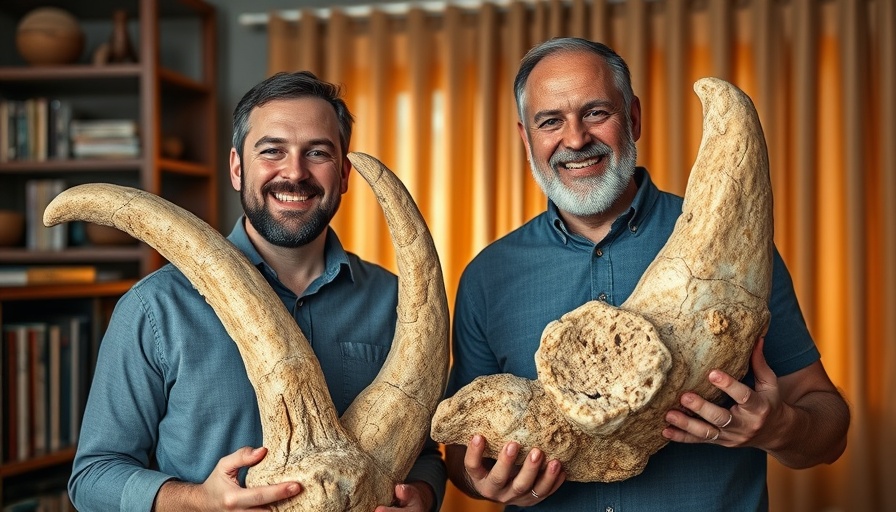
The Future of De-Extinction: A Bold Endeavor
In a world increasingly captivated by the possibilities of genetic engineering, the recent announcement from Colossal Biosciences has garnered significant attention. The company aims to embark on an ambitious project: to genetically engineer living birds that resemble the extinct South Island giant moa, a majestic bird that once towered at 12 feet tall. Spearheaded by the renowned filmmaker Peter Jackson—a figure synonymous with epic storytelling and visualization—the project represents more than just a scientific endeavor; it's a narrative aiming to bridge our past with the future of biodiversity.
Why the Moa?
The moa, an herbivorous flightless bird native to New Zealand, went extinct in the late 17th century due to hunting and habitat destruction. In this era of climate change, the project highlights the urgent need for biodiversity conservation and restoration. Jackson, who has a personal history with the moa—having held onto bones from these creatures—brings a blend of artistry and advocacy to this initiative, making it not only about science but also about engaging the public's imagination.
Beyond Technology: A Global Perspective
While the genetic engineering of the moa raises countless questions, including ethical considerations and ecological implications, it also opens a broader dialogue about de-extinction efforts across the globe. Similar projects have emerged, such as resurrecting the woolly mammoth and the passenger pigeon, all of which compel society to ponder what our responsibilities are toward species that have disappeared. Look at how tech giants and conservation groups are coming together to drive these projects, reflecting an evolving identity where technology intersects with environmental stewardship.
What Could Success Look Like?
If successful, the project could enable not just the revival of the moa, but also spark efforts to reintroduce other extinct species. Imagine habitats flourishing with once-lost animals, reshaping our understanding of ecological balance. However, the larger question persists: should we be bringing back species that have been gone for centuries? Advocates argue for the restoration of natural ecosystems; skeptics warn of potential disruption in present-day ecosystems.
Technological Enablers: The Science Behind De-Extinction
The technological underpinnings of this endeavor involve CRISPR, a revolutionary gene-editing tool that has made the dream of de-extinction a more tangible reality. By identifying and modifying certain genes, scientists can create birds that share traits with the moa while ensuring they are capable of thriving in today’s environment. This blend of genetic science and environmental advocacy could pave the way for future conservation efforts to address species loss on a monumental scale.
Sparking a Cultural Conversation
Jackson's involvement is a pivotal asset, transcending scientific boundaries and tapping into cultural narratives. It invites film enthusiasts, environmental advocates, and the general public to engage with the plight of endangered and extinct species in a new light. Through storytelling—a medium he has mastered—there lies potential for raising awareness regarding habitat destruction, climate change, and the importance of biodiversity.
The Intersection of Ethics and Innovation
As technology marches forward, ethical considerations are crucial. Many worry that pursuing de-extinction could distract from efforts to conserve existing species. Balancing innovation with responsibility might be the key, ensuring that while we explore the past, we are also actively preserving the present. This endeavor urges society to embrace a paradigm where science moves in tandem with ethical guidelines and ecological wisdom.
Embracing the Uncertainty
Though the path forward is fraught with uncertainty, the conversation sparked by the potential de-extinction of the moa could lead to unexpected insights about our relationship with nature. As Jackson and Colossal Biosciences navigate this gauntlet of science and societal impacts, the outcomes will likely resonate far beyond just avian species. It compels us to consider our model for biodiversity conservation in a rapidly changing world.
As we find ourselves in this thrilling era of experimentation and discovery, the potential to look to the future while learning from the past stands to redefine what conservation looks like. Perhaps, beyond de-extinction's bold claims, it beckons a renewed commitment to environmental stewardship and a deeper understanding of life in all its forms.
To stay updated on this captivating initiative, be sure to follow the latest trending news on social media about genetic engineering and biodiversity conservation.
 Add Row
Add Row  Add
Add 




 Add Row
Add Row  Add
Add 

Write A Comment